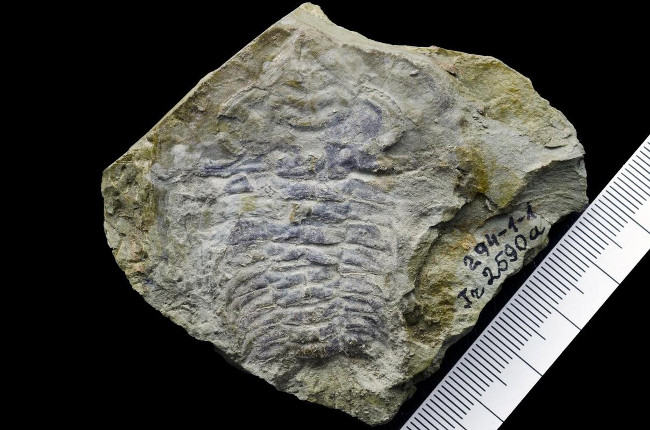530 million year old fossils have eyes like bees, dragonflies today
Researchers say what remains of extinct marine life includes an eye form similar to that of many animals today, including the newly discovered crabs, bees and dragonflies.
Scientists discovered it while examining fossils and identified it as a hard animal - called trilobite that may be related to the ancestors of spiders and crabs living in coastal waters during the Great Palaeozoic, 541-251 million years ago.
They discovered that the ancient organism had the form of primitive compound eyes - an optical organ that contained small pieces of image cells, called ommatidia, similar to today's bee eyes, dragonflies.
The research team, including a researcher from the University of Edinburgh, said their findings suggest that the eye is at least 500 million years old.
 530 million year old fossils have eyes like bees, dragonflies today Picture 1
530 million year old fossils have eyes like bees, dragonflies today Picture 1
The right eye of fossils - excavated in Estonia has been partially worn, helping researchers have a clear view inside the agency. This reveals details about the structure and function of the eye, and how this eye test differs from modern animals.
Researchers say this species has poor visibility in comparison to many animals today, but it can identify predators and evade obstacles on its path.
"The eye is composed of about 100 ommatidia, which are quite far apart from the eyes of modern insects. Unlike modern insect eyes, the fossil's eyes do not have lenses. This can happen because primitive species - called Schmidtiellus reetae - lack the necessary shell parts for lens formation ".
The team also pointed out that only a few million years later, the species' eyes may have improved with higher resolution developed in today's other trilobite fish from the Baltic region.
The study is published in the journal Proceedings of the National Academy of Sciences.
Professor Euan Clarkson, of the University of Edinburgh School of Geosciences, said: "This particular fossil tells us more about animals hundreds of millions of years ago. Notably, it also shows structure and function. The power of the eyes changes almost in half a billion years' .
See more:
- Jurassic dinosaur eggs from Jurassic era were discovered in China
- The 32 million-year-old fossil tree is found in China
- The rare giant 'living fossil' salamander stuck two years in the sewer line
You should read it
- Spider crabs compete to tear the octopus's corpse under the sea
- The 10 most exotic crabs in the world you've probably never seen before
- Unexpectedly discover the new unique hermit crab in South Africa
- Coconut crabs attack, kill crazy birds sleeping to eat meat
- Birds flying in the sky also have days of death by a group of crabs
- Millions of red 'dyed' crabs on the island of Australia
- Difficulty: Does the crab know how to hurt?
- Selecting the right time, rays easily cut giant spider meat
- 6 things you never knew about dragonflies
- Beautiful cracked walls of the most heterologous colors of the earth
- Mysterious sea creatures do not have eyes, mouth washes on American beaches
- Discovering tiny crab species can climb trees
May be interested

The 1,600-year Roman tomb with ancient coins was discovered in Somerset

Pre-Hispanic Temple of Wari civilization is found in Peru

Ancient burial tombs contain strange artifacts discovered in Izmir, Turkey

Archaeologists unexpectedly discovered Byzantine Monastery

Turkish monument 1,300 years old discovered in the Mongolian steppe

The remains of dinosaur suspects were discovered in Uttarakhand, India






 Things You Never Knew About Dragonflies
Things You Never Knew About Dragonflies 6 things you never knew about dragonflies
6 things you never knew about dragonflies The 32 million-year-old fossil tree is found in China
The 32 million-year-old fossil tree is found in China The 110 million-year-old dinosaur fossil intact as alive
The 110 million-year-old dinosaur fossil intact as alive Found fossils of prehistoric 127 million year old small birds
Found fossils of prehistoric 127 million year old small birds The mystery of the 290-million-year-old giants challenges scientists around the world
The mystery of the 290-million-year-old giants challenges scientists around the world